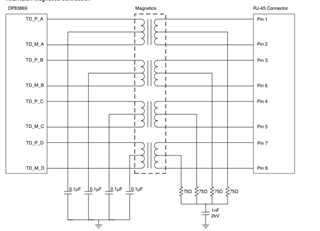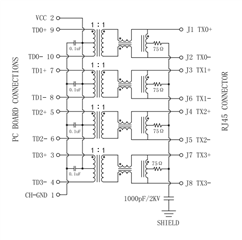Other Parts Discussed in Thread: DP83869
We have used Ethernet PHYs DP83867IRRGZT and DP83869HMRGZT with processor AM6421BSFGHAALV. We followed reference design for AM64xx and used same PHYs as reference.
We have used below RJ45 connector with inbuilt magnetics.
MFR# 2250731-1 from Bel Fuse Inc.
MFR# 0826-1K1T-43-F from Bel Fuse Inc
But internal design of magnetics is different than what is used in AM64xx reference design.
For AM64xx reference design, below are RJ45 connector with inbuilt magnetics.
MFR# LPJG17512AONL from Link-PP
MFR# LPJG16314A4NL from Link-PP
I have attached datasheets of all 4 connectors.
I tried to find application note or any article that can explain different types of magnetics, but I did not find any specific information.
Can you please help to resolve below queries:
1) I used RJ45 with different magnetics design than reference design. Does this make any difference?
2) What are different types of ethernet magnetics and how does it make any difference to ethernet interface? Is there any application note available?
3) What are applications of different type of ethernet magnetics?
Regards,
Nikhil Jadhav





